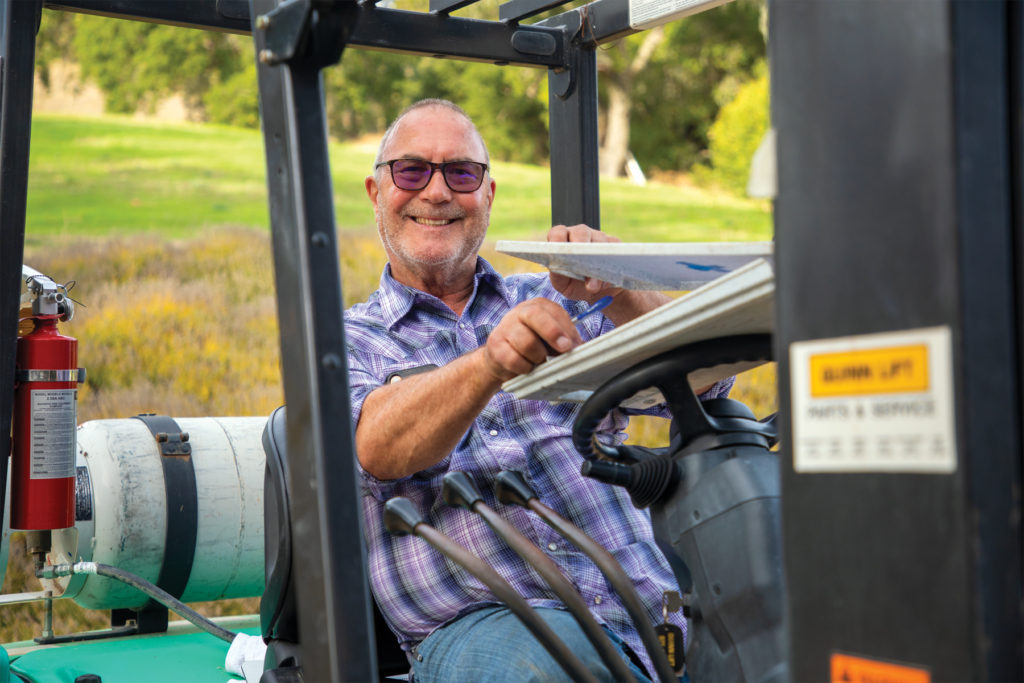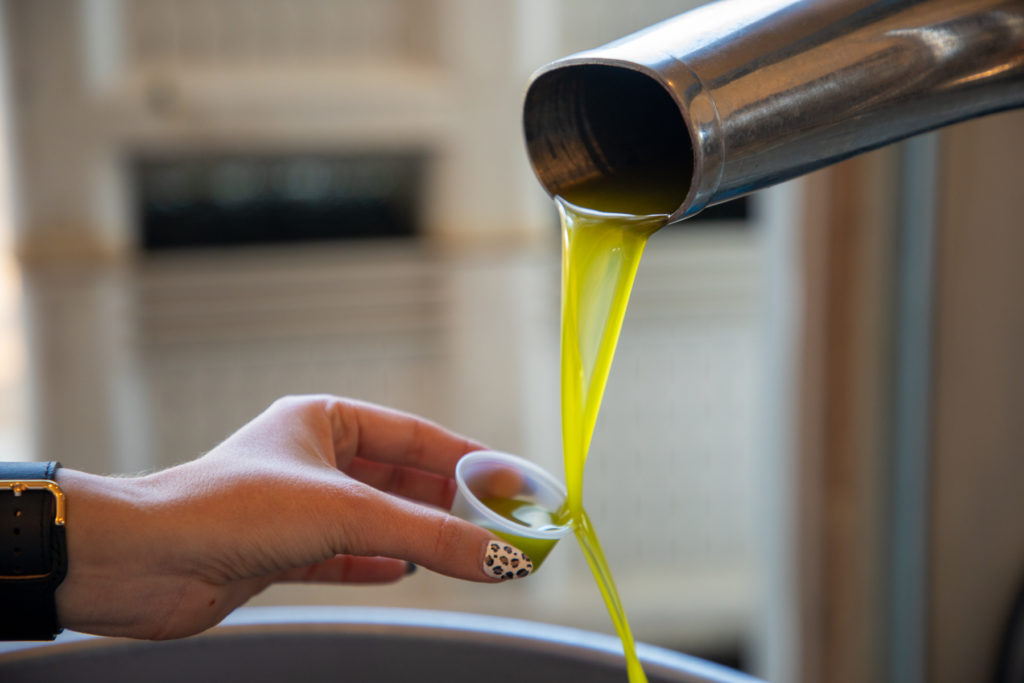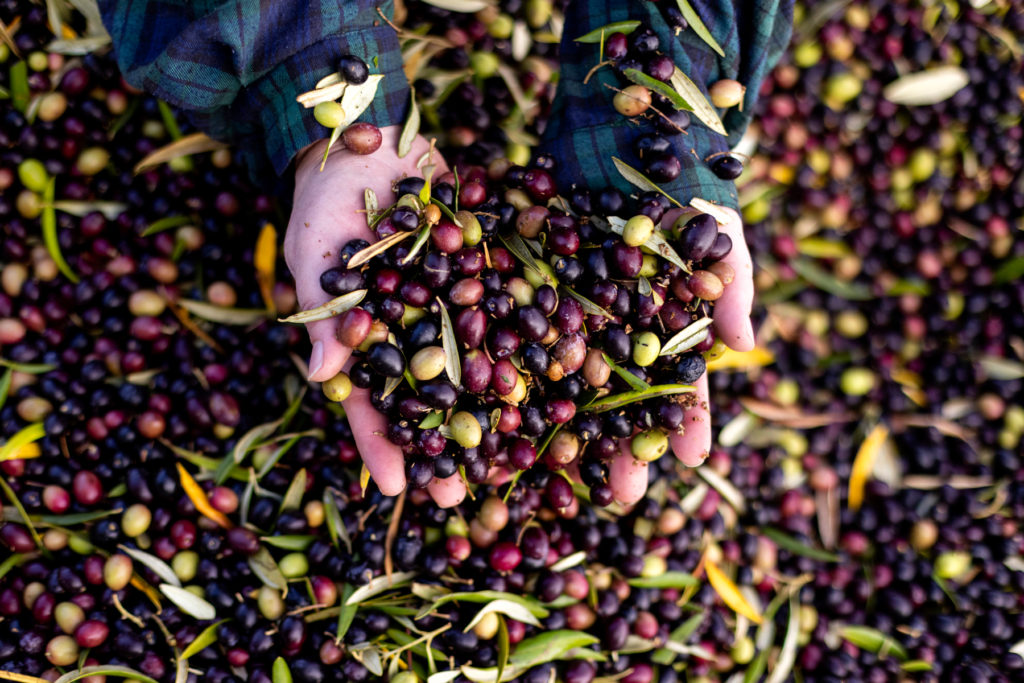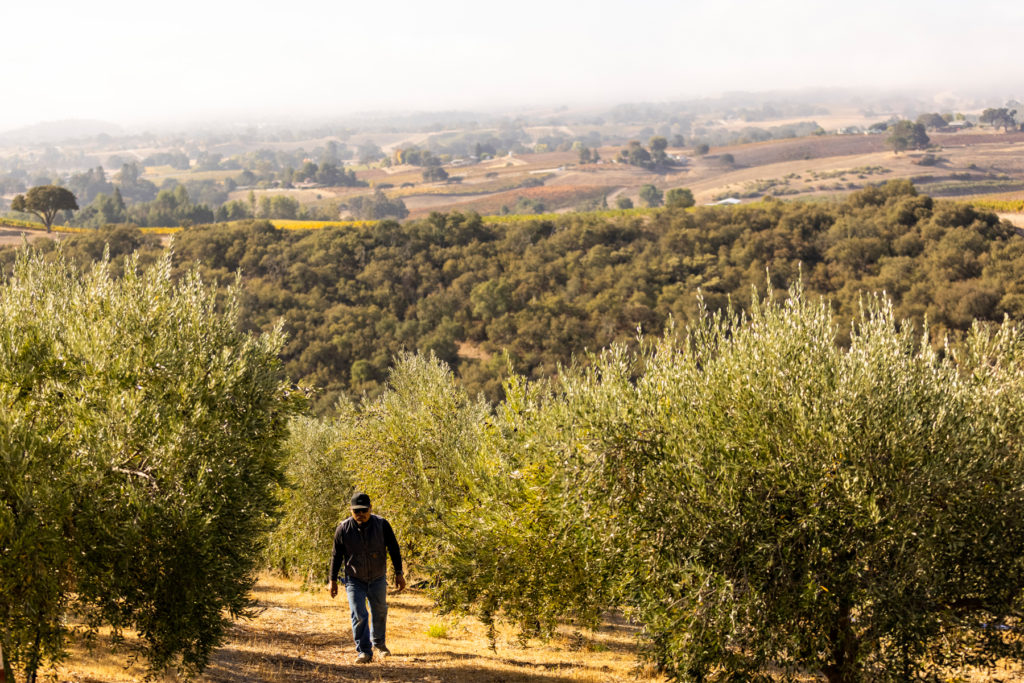
Fresh off the Press
Photography by Ruby Wallau
The average time for running a marathon is a little over four hours. In the same time it takes a typical runner to complete the 26.2–mile course, harvesters at a pair of Paso Robles olive farms must process the olives picked from the trees. It’s a race against the clock and every bit a marathon, one that promises peppery, polyphenol-packed oil if completed quickly but threatens bitterness if left too long to ferment.
Once pickers wrapped up the grape harvest in September, they began plucking a different kind of fruit at both Kiler Ridge and Pasolivo olive orchards in Paso Robles. The harvest season for olives begins in November and lasts about a month. Like grape vines, olive trees flourish here due to the temperate coastal climate. But the trees don’t produce fruit every year; they’re alternate year bearing because the fruit depends on the previous year’s growth. During an “on” year, a tree produces an abundance of smaller olives while an “off” year leaves farmers with a small amount of large fruit.

On 130 acres of rolling hills, wild turkey and deer wander the Pasolivo property and among its 7,000 olive trees. Of the 12 varieties of olive tree at Pasolivo, Tuscan is primary. “The Spanish varietal produces a more grassy and herbaceous flavor while the French is balanced,” Pasolivo General Manager Marisa Block Gaytan says.
Marisa, a level II olive oil sommelier, is also a master blender, meaning she determines what natural ingredients to add to Pasolivo’s flavored oil collection. Tangerine, citrus, lime, basil, garlic and red jalapeño are the current featured flavors and most of the ingredients are co-milled alongside the olives. Marisa’s ranking as a sommelier also keys her in to what she calls “olive oil fraud.”

“Some of the olive oil you see in the grocery stores are much lower quality,” Marisa says. “If multiple countries are listed on the bottle, it traveled far and was blended. That’s a quality concern. Look for a harvest date, not the bottled date, to make sure you’re getting a fresh oil.”
Most of the olive oil consumed in the U.S. is imported, according to Kiler Ridge Co-Owner Audrey Burnam. She says Italians consume more than the country produces so the olive oil on U.S. supermarket shelves comes primarily from the Mediterranean. “There’s nothing wrong with basic oil but in terms of taste, it’s not the same experience. Standard supermarket oils are more neutral like canola oil. Truly authentic oil has great flavor and can be used more like a condiment,” Audrey says. She also is a member of the California Olive Oil Council.

Not only is oil tasty, but emerging studies hail the health benefits associated with its monounsaturated fats and antioxidants. Research supports claims that the oil can have an anti-inflammatory effect, while some studies argue a link to reduced chronic disease.
The fresh oils sold at Kiler Ridge and Pasolivo do come with a premium price point, ringing up at about double the cost of a standard grocery store offering. But Audrey and Marisa agree that like wine, you get what you pay for and nothing compares to the pungency of fresh California oil. “It’s an explosion of flavor,” exclaims Audrey.

Kiler Ridge yields about 11.4 tons of olives each harvest season. Pasolivo weighs in, on average, somewhere between 100 and 300 tons. Once the olives are plucked from the trees, they’re processed through the mill within about four hours. The whole olive is crushed and made into a paste, allowing the oil to be extracted. The leftover olive material, which is called pumice, is at both farms spread over the land to support new growth and eliminate waste.
“It makes the soil richer,” says Marisa. “We just planted new trees last year that shouldn’t be producing yet but they already have fruit.” The practice of spreading pumice is, as Audrey teaches, really just replicating what the trees would do naturally by dropping fruit below the canopy.

Tastings are offered at both locations as an opportunity for guests to experience fresh olive oil and learn more about harvest and production. One of the misnomers Marisa most frequently resolves for guests is the assumption that black and green olives come from different trees. “They all start out green,” she says. “They never ripen at once, but we need a good balance of green and dark to determine when to harvest.”
The very freshest and first press of olive oil from each harvest is called olio nuovo, or “new oil” in Italian. This unfiltered oil includes a high amount of natural sediment. Marisa says the result is increased health benefits and a stronger flavor, one that often surprises customers who are strangers to the new oil. The polyphenols, naturally occurring organic compounds high in antioxidants, register in the back of the throat and create a tickle that can result in coughing.

It’s unlikely the products of either farm will ever be found on the shelves of commercial grocery stores and that’s by design, both women agree, noting the importance of maintaining control over their product. While Kiler Ridge intends to stay a smaller 14-acre operation, Pasolivo plans to expand, adding tasting rooms in San Luis Obispo, Santa Barbara and maybe even Austin, Texas. “Olive oil sales have increased substantially over the past few years as consumers become more familiar with it,” says Marisa. “We’re excited that people are recognizing the value of quality.”
“We’re a young industry,” adds Audrey. “People still mostly associate this area with wine. But more people are visiting specifically to taste olive oil and that’s really the best way to experience it. No description does it justice, you really have to taste it.”


